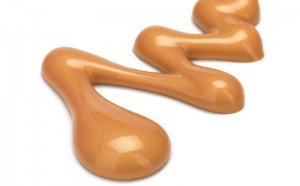 Dihydroxyacetone (DHA) is a water soluble alpha hydroxyl ketone that is the active in sunless tanning formulations. DHA reacts with amines, peptides, and amino-acids in the stratum corneum to generate brown polymers called melanoidins and after 2-6 hours a brown coloration similar to a tan is formed. (EU: Dihydroxyacetone | DHA)
Dihydroxyacetone (DHA) is a water soluble alpha hydroxyl ketone that is the active in sunless tanning formulations. DHA reacts with amines, peptides, and amino-acids in the stratum corneum to generate brown polymers called melanoidins and after 2-6 hours a brown coloration similar to a tan is formed. (EU: Dihydroxyacetone | DHA)
If you’re working on a sunless tanning formulation (EU), use the following 11 tips to make sure your formulation with DHA is a success.
Stabilizing Tips
1. Formulate at a PH of 3-4. In water, DHA initially has a pH of 5.5 and which drifts down to 3-4 over time.
2. Avoid using metal oxides (iron oxides, titanium/zinc oxides).
3. Avoid phosphates. Don’t use pH buffering agents, many are phosphate based.
4. Avoid incorporating any amine containing ingredient (amino acids, peptides, proteins, EDTA).
5. Avoid using alpha or beta hydroxy acids.
6. Avoid using oxidizing agents.
7. Sodium Metabisulfite (EU) is an excellent stabilizer to prevent Dihydroxyacetone formulations from discoloring.
8. Add DHA to formulations at <40C.
9. Use an opaque packaging in order to avoid a UV-induced degradation of DHA.
10. Use low PH stable acryloyldimethyltaurate based polymers as thickeners, such as Aristoflex AVS by Clariant and Sepiplus S and Sepigel 305 by Seppic.
(EU: acryloyldimethyltaurate | Aristoflex | Sepiplus S | Sepigel 305)
11. Use xanthan gum and SepiMax Zen by Seppic in formulations containing high levels of electrolyte.
(EU: xanthan gum | SepiMax Zen)
The views, opinions and technical analyses presented here are those of the author or advertiser, and are not necessarily those of ULProspector.com or UL Solutions. The appearance of this content in the UL Prospector Knowledge Center does not constitute an endorsement by UL Solutions or its affiliates.
All content is subject to copyright and may not be reproduced without prior authorization from UL Solutions or the content author.
The content has been made available for informational and educational purposes only. While the editors of this site may verify the accuracy of its content from time to time, we assume no responsibility for errors made by the author, editorial staff or any other contributor.
UL Solutions does not make any representations or warranties with respect to the accuracy, applicability, fitness or completeness of the content. UL Solutions does not warrant the performance, effectiveness or applicability of sites listed or linked to in any content.



Leave a Reply or Comment